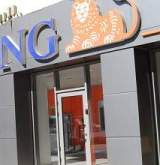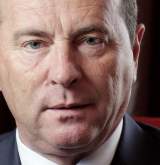A look into the pharma sector at BSE
The main pharmaceutical issuers are Biofarm (“BIO”), Antibiotice (“ATB”) and Zentiva (“SCD”), producers of drugs and pharmaceutical products.
Farmaceutica Remedia has been recently introduced in the trading arena at the second category, however given its profile (drug retail) is not analyzed in this segment. The pharma sector had a roughly similar trend as the BET indice, marking a 52% drop versus September 2008.
“Unfortunately, in 2008, the entire pharmaceutical sector has been negatively influenced by the sagging local currency against euro (especially importers), by the regulations established by the Ministry of Health on the use of marketed name instead of the active substance, as well as by the conflict between suppliers and Ministry of Health”, Mirela Maxim, director of Bucharest-based subsidiary of SSIF Interdealer Capital Invest Cluj told Wall-Street.
Two of the aforementioned companies have already made public their 2008 earning report, Antibiotice Iasi marking a 68% drop in after-tax profit , while the turnover shrank be merely 5.9%.
“Biofarm’s financial results were quite discouraging, the company recording a heavy 21-million lei loss, due to a 31.5-million lei provision, following a wavering depreciation of stock holding at BSE (especially investments in FICs)”, she said.
Paul Brendea, analyst at Prime Transaction, highlights the narrow market share changes of the issuers in last year.
“We see steady companies with steady market, their products are very well known and the lowering market share reflects the rising living standards of the population which now is shifting focus to more expensive products, to multinational makers. Nevertheless, I think that starting with 2009, the deterioration of the living standard will act in the benefit of Romanian drugmakers”, the analyst commented.
Translated by Camelia Oancea.
Financial crisis and drug production output
The first effects of the financial crisis had a minor impact in pharmaceutical producers’ turnover, at least for the moment, yet the profit margins were severely crippled.
“I believe the 2008 financial results are no longer the yardsticks to determine the companies’ dynamics for this year. The domestic landscape has changed dramatically and as of fourth quarter 2008, this has impacted the issuers’ earning results”, said Andreea Gheorghe.
Romanian pharmaceutical companies, she added, remain responsive to factors like depreciation of the exchange rates, (that can majorly damage the profit margins, especially in the event of a low export share of total output).
“For the moment, the companies’ turnovers were not affected. The rising costs on local currency depreciation, lending costs and the dwindling value of stakes held (in case of BIO) have led to a reduction of profitability”, said Mirela Maxim.
So far, we’ve seen a mild increase of operating profit at Antibiotice and Biofarm until the release of fourth quarter results in 2008, when the companies marked down losses.
“At Biofarm, the financial losses were so big that that the company recorded a negative outcome in the last quarter, mainly because of the basket made up FIC shares set up in late 2007, when the shares neared record-highs”, said Paul Brendea.
Do pharma shares make a good stock option plan?
Despite the reticence in making stock recommendations, specialists say the pharmaceutical stocks should always be an essential component in each investor’s basket.
“If someone decides to invest at the stock market in these downtimes, the pharmaceutical sector should be their no1 investment avenue choice, and as we saw in the latest reports, turnovers have scarcely been impacted by the crisis. Unfortunately, the profitability of companies has been dented by the regulations imposed by the Ministry of Health and by the dwindling local currency”, said Mirela Maxim.
Paul Brendea, however doesn’t recommend investing, except to speculators. “They can benefit from the wide-bandwidth volatility of the market. To investor, though, I recommend the waiting mode”, he said.
As for the pharma sector, there are two opposite approaches, he noted.
“There is the approach of defensive stocks that leverages buyers, and at the opposite side, is the general approach on Romania and Eastern Europe that is profitable for vendors. Then, there are differences between companies: Biofarm – that poses the higher risk due to its exposure to FICs, Antibiotice – somewhere stuck in the middle, facing problems with accounts receivable recovery and Zentiva who has to confirm the improvements in first nine months of 2008”, explained the analyst at Prime Transaction.
In last year’s fall, analysts were recommending as defensive stocks – companies whose products feature a low resilience toward consumers’ incomes.
“The pharma sector or the utility sector is deemed as “defensive”, which means that when the economy is showing signs of weakness, they provide a way to hedge the overall portfolio risk. Even if the business environment worsens, the demand for pharmaceutical companies or utilities is less resilient”, Andreea Gheorghe with Intercapital Invest told Wall-Street.
Pharmaceutical, food industry and utilities are deemed as defensive stocks.
“I don’t know how much this criterion applies now, same as other criteria applicable in the fundamental or technical analyses, when all actions taken in the stock markets across the world are made on fear”, said Paul Brendea.
As Mirela Maxim notes, the pharmaceutical shares are still considered defensive, the drug demand being expected to remain constant, despite crisis.
Antibiotice Iasi � impacted by currency exchange rate
“A major negative impact over profit was triggered by the depreciation of the local currency, Antibiotice importing (according to 2007 data) nearly a third of the raw materials. Another underlying reason of the weak performance was the lockdown of drug prices. In February 1, 2009, Antibiotice reset the price of half of its products to a 4 lei/euro exchange rate, which drove an average price increase of 20%. Last year, the drug prices within the company’s portfolio were frozen at 3.33 lei/euro exchange rate . The company expects a 10% increase of turnover and 15% of profit this year”, Andreea Gheorghe explained.
The drug producer Antibiotice Iasi (ATB) reported 10.17 million lei net (2.76 million euro).
Andreea Gheorghe said she expected Antibiotice Iasi to meet the turnover target, but not the profit target for 2009, which could be lower, depending on the evolution of the exchange rates.
“At a roughly 1 BETA, Antibiotice Iasi could not be included in defensive stock category, “probably due to its wide exposure of results to the evolution of leu against euro or to the dependence of drug prices to the market regulation”, the analyst explained.
The company had a share capital of 45.49 million lei, divided into 454.9 million shares of 0.10 lei nominal value. The majority shareholder of the company is the Authority for State Asset Recovery with 53.02% stake. FIC Oltenia holds 10.10% stake.
Early last year, ASAR decided to publish the abrogation of the sale bid of Antibiotice Iasi and the full refunding of amounts paid by investors for the file and for the access to data room.
At the same time, ASAR said it would resume the privatization procedures for the company in compliance with the European Commission requirements, taking into consideration the economic and social weight of SC Antibiotice SA Iasi.
Biofarm � financial losses on sight
Biofarm Bucharest reported 9% increase of total earnings for 2008 from prior year, and 13% growth in the last quarter of 2008 compared to a year-ago period. The operating profit fell slightly by 6% in 2008, and in the final quarter last year, it climbed 26%.
The company recorded 33 million lei loss in fourth quarter 2008.
“Biofarm decided in late 2007 to pour nearly 40.6 million lei into stock floated at the stock market, their yearend decline leading to the formation of large provisions, hence wiping out the operating profit and leading to a negative final year result in 2008”, said Andreea Gheorghe.
The decision of the Ministry of Health of freezing drug prices at 3.33 lei/euro exchange rate in 2008, didn’t have a major impact on the company, as only 20% of its drug portfolio was exposed to these regulations.
“The wide exposure of Biofarm’s results to stock market conditions is a weak side for the company and I expect the investor penalize them. The company will probably keep on recording a moderate growth dynamics both for turnover and operating profit, however it is very likely to see ongoing financial losses”, said the director of analysis department at Intercapital Invest.
She added that the field of expertise may not count very much to investors in 2009, with the possibility of further negative evolution attuned to the market pace or even above median, after the publication of preliminary results.
Biofarm Bucharest has a share capital of 109.48 million lei, divided into 1.09 billion shares, at a nominal value of 0.10 lei. According to the latter report, FIC5 Oltenia was holding 16.42% of Biofarm, FIC Banat-Crisana - 12.53%, FIC Moldova – 11.46% while ASAR holds 1.04% shares.
Is Zentiva confirming the improvements made in first nine months last year?
According to the financial calendar posted by Bucharest Stock Exchange, the drug producer Zentiva Romania will submit the 2008 preliminary report on March 23, 2008.
Financial analysts expect a confirmation of the favorable results of first three quarters 2008, although, it is possible the financial crisis to be reflected in the company’s turnover in the last part of the year.
In first nine months of 2008, Zentiva’s net sales hiked only 2% (expressed in lei), while Zentiva N.V’s sales jumped 18% in first nine months, (expressed in Czech korunas), fueled by the constant growth of sales in Turkey (+22% in local currency).
“The favorable evolution of Zentiva’s results in Romania reflects the reconsolidation of activity locally and the benefits of strategy changes initiated in the last year, meant to change focus from market share to working capital optimization, spending management and financial profitability. All these factors led to a consolidation and development of operating infrastructure and business durability “, said Dragos Damian, managing director of Zentiva.
Zentiva’s workforce accounts for 6,000 and holds production facilities in Czech, Slovakia, Romania and Turkey.
Zentiva’s shares are traded at the stock exchanges in Prague and London.
























































![HR [PLAY] Tech Workout - 11...](https://www.wall-street.ro/image_thumbs/thumbs/973/973fe0a3888d417feff63de42e814180-260x260-00-65.jpg?v=1713526377)










